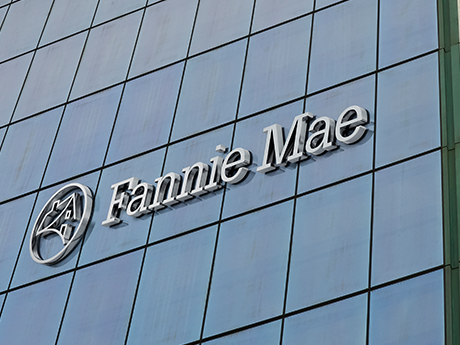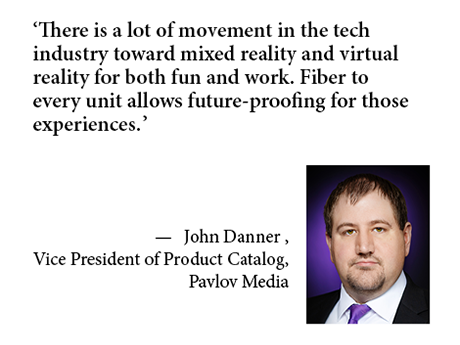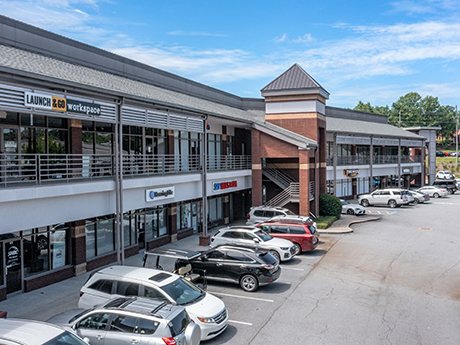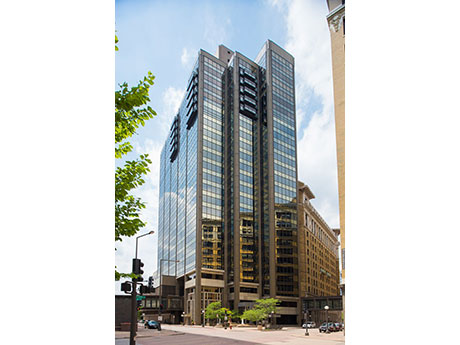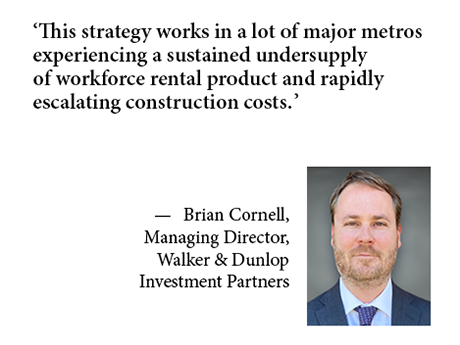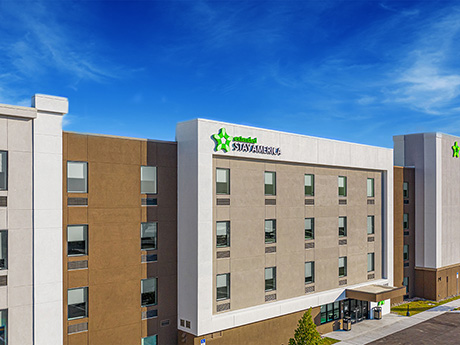Deciding where to eat out is a conundrum familiar to many an American consumer. The plethora of food-and-beverage concepts now dotting the retail landscape complicate the question. Food halls embody a sort of paradox — they act as a microcosm of all this variety, while simultaneously removing the need to select a single restaurant. As Michael Morris, chief executive officer of Food Hall Co. puts it, consumers “can come in with various different dietary restrictions or desires and find something for everyone.” Nearly five years ago, founders Jack Gibbons and Randy DeWitt of Front Burner Restaurants (also known as FB Society) were approached by a Plano, Texas, developer interested in establishing a food hall. This resulted in the company’s first location — Legacy Food Hall — and the genesis of Food Hall Co. itself. A food hall located at Fifth and Broadway in Nashville, dubbed Assembly Food Hall, has since joined the portfolio, and though the company’s footprint currently stands at two, Morris says this won’t be the case for long. Everything’s Bigger in Texas One aspect of Food Hall Co.’s locations that distinguishes them from other food halls is their sheer size. While Morris says that the typical food …
Features
Affordable HousingDistrict of ColumbiaFeaturesLoansMultifamilySeniors HousingSoutheastSoutheast Feature ArchiveStudent Housing
Rising Interest Rates Take Toll on Fannie, Freddie Deal Volume
by John Nelson
The multifamily divisions of Fannie Mae and Freddie Mac are off to a slow start this year as the government-sponsored enterprises (GSEs), their network of lending partners and multifamily borrowers contend with rising interest rates. Fannie Mae’s volume of new multifamily business totaled $10.2 billion in the first quarter of 2023, which is a 36 percent decrease from the same period a year earlier when the agency closed $16 billion. Freddie Mac closed $6 billion in new multifamily business in the first quarter, a year-over-year decrease of 60 percent. Seasoned agency lending professionals all point to elevated borrowing costs as the primary reason for the two agencies closing less business thus far in 2023. “The rapid increase in rates across the board has really been a shock to the industry,” says Vic Clark, senior managing director and head of conventional multifamily production at Lument. At its May meeting, the Federal Open Markets Committee raised the federal funds rate to a target range of 5 to 5.25 percent. The fed funds rate is the interest rate that U.S. banks charge each other to lend funds overnight. This time a year ago, the short-term benchmark rate was at a range of 0.75 …
Technology, like commercial real estate, becomes increasingly vulnerable to the need for replacement and updates over time. Just as multifamily landlords can update properties by periodically replacing outmoded flooring and fixtures to suit the latest occupier preferences, technology must also keep up with the latest trends. For the best renter experience, multifamily properties need Internet connectivity that will serve residents as their technological needs grow and their tolerance for frequent outages diminishes. Disruptions associated with repairs or network upgrades can threaten customer satisfaction and renewal rates. Unfortunately for many landlords who rely on traditional telecommunications lines for their properties’ Internet, modern usage is straining older infrastructure. Booming wireless technology use is gobbling up bandwidth to connect everything from consumers’ phones and laptops to fitness monitors, smart TVs and other household appliances. As a vice president of product catalog who has worked for over a decade at broadband service provider Pavlov Media, John Danner understands the problem of limited Internet bandwidth all too well. He is eager to see technological improvements that will replace these old systems. “The old copper infrastructure can’t meet the requirements of the next generation of wireless connectivity,” explains Danner. “With fiber-optic connections, the sky is the …
By Jeff Enck, senior vice president, SRS Real Estate Partners Throughout the world of retail investment sales, reality is setting in. Buyers and sellers of unanchored retail shops are adjusting to lingering market uncertainty, which, at least for now, seems to be here to stay. Over the past 12 to 18 months, the Federal Reserve has doused the white-hot, inflation-powered economy with buckets of interest rate hikes, increasing the effective federal funds rate from .08 percent at the beginning of 2022 to 5.08 percent today. Based on the central bank’s latest public signals, it doesn’t appear that interest rates are coming back down anytime soon. But it’s important to note that, historically speaking, they are not significantly high. Debt Challenges Continue Insurance companies, credit unions and relationship-driven lenders are financing the majority of retail deals in the market today. Typical bank loans, however, have slowed significantly as some institutions are either inactive or face rates are too high to meet debt service coverage ratios. Some private investors are buying with all cash or closing with cash plus lines of credit. A recent example of a “new normal” deal involves a life insurance company loan on a purchase transaction of a $15 …
There’s no denying the office sector is undergoing a critical period marked by myriad challenges. The question is, how will it all turn out? Currently, the inventory of U.S. office space is 5.56 billion square feet — and will likely reach over 5.68 billion square feet by the end of the decade. But today’s “flexible” workforce will only require 4.61 billion square feet to accommodate its needs, according to a Cushman & Wakefield report titled “Obsolescence Equals Opportunity.” “The U.S. will end the decade with 1.1 billion square feet of vacant office space, 740 million square feet of which qualifies as normal or natural vacancy and 330 million square feet of which qualifies as excess vacancy attributable to remote and hybrid strategies,” the report states. “The overall level of vacancy will therefore be 55 percent higher than was observed prior to the pandemic.” Those numbers are jarring, but opportunists say the office sector just needs to evolve and adapt, much like the retail market has done. “Just as retail didn’t die in the years following the e-commerce boom, the office sector is not in danger of demise,” states the Cushman & Wakefield report. “Recognizing the challenges and opportunities head-on with …
Affordable HousingContent PartnerFeaturesHospitalityMidwestMultifamilyNortheastSoutheastTexasWalker & DunlopWestern
Underutilized Hotel Properties Present Conversion Opportunities for Multifamily, Affordable Housing
Walker & Dunlop is finding financial success while helping to provide high-demand, affordable housing in key markets by converting hotel assets into multifamily buildings. Brian Cornell, managing director at Walker & Dunlop Investment Partners (WDIP), says his firm is identifying hotels that are already built out and can accommodate market-rate multifamily use. Extended-stay hotels have the best layout for this type of conversion because their footprint already includes the floor plans and many of the amenities that multifamily residents expect. “The units are typically one-bedroom, but with some two-bedroom suites and studios,” he outlines. “This creates a variety of unit types within the existing physical build-out of the property, and these assets can operate as true multifamily without having to combine walls and do extensive capital renovations.” When it comes to location, Cornell explains, “We prefer infill locations that have strong employment drivers and a dearth of affordable housing.” Underutilized Properties, Multifamily Strategies The three investments Walker & Dunlop has done in the past two years are in the heart of commercial corridors, in areas where there are limited multifamily projects within a two-to-three-mile radius offering rents that can support an 80 percent area median income (AMI) threshold. One is …
By Ryan Kawai Sanchez The average length of stay in hotels has undergone a notable shift since the onset of the COVID-19 pandemic. Many travelers have opted to extend their hotel stays for longer durations. According to industry reports, the average length of stay in hotels has increased by approximately 20 to 25 percent compared to pre-pandemic levels. This trend has been observed across various hospitality industry segments, including leisure and business travel. According to forecasts, the hotel industry in the United States is expected to surpass its pre-pandemic record with 1.3 billion occupied room nights in 2023. This projection indicates a significant increase of 56.9 percent from the lowest point in 2020, which was 831.64 million occupied room nights. From 2021 to 2022, the demand for hotels experienced an improvement of 11.1 percent. In April 2020, over 75 percent of hotel rooms in the country were unoccupied, as reported by STR. However, three years later, the hotel industry has significantly recovered and is expected to continue this positive trend in the coming year. The average hotel occupancy rate in the United States is projected to be 63.8 percent in 2023, a remarkable improvement from the historic low of 43.9 …
Retailers, developers and leasing agents who attended the ICSC LAS VEGAS 2023 conference in May left the show cautiously upbeat about the state of retail. It was only the second consecutive gathering since the pandemic shut down the annual show in 2020 and 2021, and many brands made known their intent to remain in expansion mode, especially fast-casual restaurants, car washes, coffee shops, auto parts stores, entertainment concepts and medical services. The only obstacle stopping them at this point is the higher rental rates that they may have to pay as a consequence of higher construction costs, says George Macoubray, vice president of retail brokerage for NAI Elliott in Portland, Oregon. “A lot of these concepts are doing well,” declares Macoubray, whose Northwest Retail Advisors team represents landlords and regional and national tenants throughout Oregon and Washington. “We’ll see how far these tenants can go in terms of what they pay to fill new projects, but the enthusiasm and willingness to grow is definitely there.” Practicing Vigilance The same can’t be said for ICSC conference attendees who are on the capital markets side of the business. Higher interest rates have fueled a bid-ask spread between buyers and lenders, while regulatory …
Affordable HousingBuild-to-RentConference CoverageFeaturesMultifamilyNorth CarolinaSingle-Family RentalSouth CarolinaSoutheastSoutheast Feature Archive
Suburbs Are King for Carolinas Multifamily Market, Say InterFace Panelists
by John Nelson
Suburban markets in the Carolinas are the big winners in the current multifamily landscape, both from a new development and rent growth perspective, according to the various panelists at the InterFace Carolinas Multifamily conference. Hosted by InterFace Conference Group and Southeast Real Estate Business, the annual event took place on May 25 at the Hilton Charlotte Uptown hotel. At the end of the leasing and operations panel, moderator Mike Susen, senior director of real estate at Greystar, asked the property managers on stage if they could manage any product type in any Carolinas market, which they would choose. The consensus was their dream assignments lie in the suburbs. “Let’s do mid-rise suburbs, something out toward Matthews or the Mint Hill area,” said Amanda Kitts, senior vice president of property management at Northwood Ravin, referring to the suburbs of Charlotte. “I’d want to do product that those markets haven’t seen yet.” “Suburban product is still really strong right now,” added Bob Moore, co-founder and CEO of FCA Management LLC. “Tertiary markets are going to surprise you. You’ll see opportunities to do some deals where there has been a lot lower supply.” Property managers are keen to handle suburban communities because those …
For real estate investors who have an acquisition teed up or who need to refinance, the prospects of finding debt today are arguably the bleakest they have been since the financial crisis 15 years ago. Higher interest rates and concerns over growing distress convinced banks and other lenders to move to the sidelines several months ago, thwarting commercial real estate investment sales. In turn, that is fueling broad uncertainty over what properties are really worth, which only begets more unease among banks. But private debt funds, which typically provide short-term rate bridge loans, are more likely to make deals when banks will not, says Jeff Salladin, a managing director with Dallas-based debt fund Revere Capital. That’s because debt funds like Revere raise capital from sophisticated investors to fund their loans, he says, while banks rely on deposits. That subjects banks to stringent regulatory oversight, which is especially intense in today’s debt climate. “All investors dislike uncertainty, and banks are investors by another definition,” states Salladin, who oversees real estate lending for Revere. “As a result, we could be in the first inning of a golden era for debt funds like ourselves, because we’re more flexible in way banks can’t be.” …



